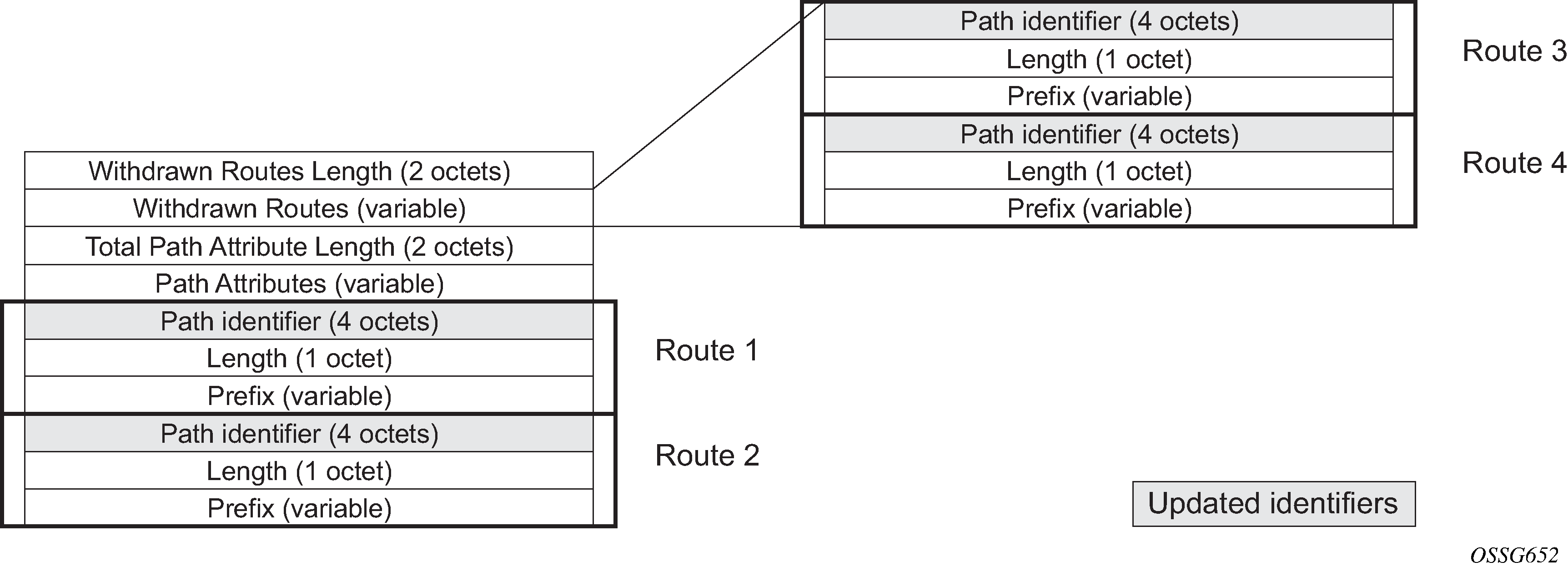Add-paths is a BGP enhancement that allows a BGP router to advertise multiple distinct paths for the same prefix/NLRI. Add-Paths provides a number of potential benefits, including reduced routing churn, faster convergence, and better loadsharing.
For a router to receive multiple paths per NLRI from a peer, for a particular address family, the peer must announce the BGP capability to send multiple paths for the address family and the local router must announce the BGP capability to receive multiple paths for the address family. When the Add-Path capability has been negotiated this way, all advertisements and withdrawals of NLRI by the peer must include a path identifier. The path identifier has no significance to the receiving router. If the combination of NLRI and path identifier in an advertisement from a peer is unique (does not match an existing route in the RIB-IN from that peer) then the route is added to the RIB-IN. If the combination of NLRI and path identifier in a received advertisement is the same as an existing route in the RIB-IN from the peer then the new route replaces the existing one. If the combination of NLRI and path identifier in a received withdrawal matches an existing route in the RIB-IN from the peer, then that route is removed from the RIB-IN.
An UPDATE message carrying an IPv4 NLRI with a path identifier is shown in Figure: BGP update message with path identifier for IPv4 NLRI.

Add-paths is only supported by the base router BGP instance and the EBGP and IBGP sessions it forms with other peers capable of add-paths. The ability to send and receive multiple paths per prefix is configurable per family, and supported for the following options:
IPv4
label-IPv4
VPN-IPv4
IPv6
label-IPv6
VPN-IPv6
MCAST-VPN-IPv4
MCAST-VPN-IPv6
MVPN-IPv4
MVPN-IPv6
EVPN